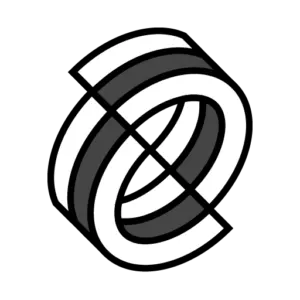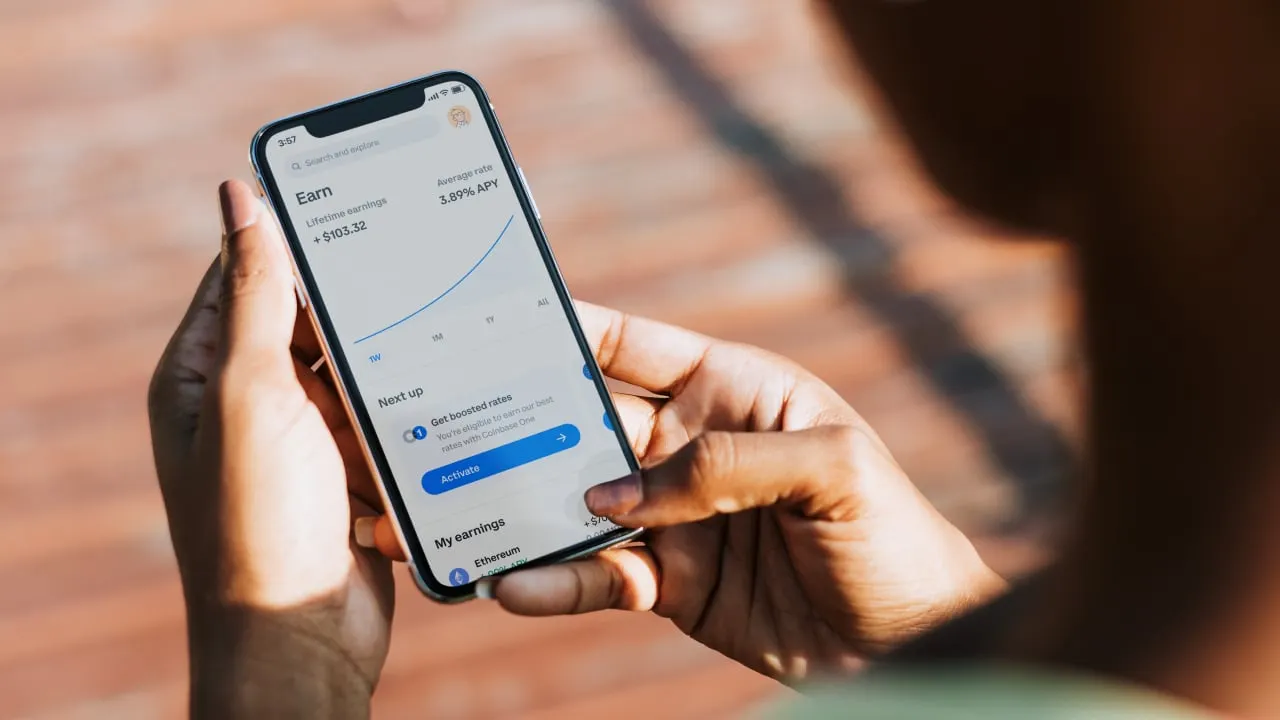If you hold cryptocurrency on an exchange like Coinbase, staking it is an easy way to earn yield on crypto that would otherwise sit idle.
Staking on Coinbase Earn is a simple process, Coinbase Staking Product Lead John Zettler told Decrypt. From the Coinbase user’s point of view, it’s a matter of navigating to an asset you hold on the exchange, then clicking stake; Coinbase takes care of the rest.
“Staking is the process that many blockchains use to be secure and healthy,” said Zettler. Users who stake cryptocurrency earn rewards drawn from “transaction fees and network rewards in the form of new coins,” he explained. Traditionally, if you purchase something with a credit card or check, it takes a number of centralized organizations to process that payment. Staking leverages a large global decentralized community of asset owners and validators rather than relying on a few centralized organizations.
Proof of stake blockchains are secured by validators, who stake their cryptocurrency, locking it up in order to earn the right to verify transactions on the blockchain. If they’re selected to write the next block, they receive a reward for doing so in the network’s native token.
Typically, validator nodes require a large amount of assets to stake and technical knowledge to set up nodes. For example, on the Ethereum network, individual stakers need a minimum of 32 ETH to run a validator. Coinbase makes staking more accessible by aggregating staked assets into batches and performing the technical work. This means Coinbase customers can get started staking with as little as 1 USD worth of crypto, and earn rewards for their staked assets. Customers can earn up to 10% APY1 depending on the asset.
There’s a widespread misconception that staking is similar to lending, said Zettler. “With staking, you're earning yield—but earnings do not come from lending out assets,” Zettler explained. “This is really important, because Coinbase always stores customers’ assets one-to-one, and customer assets are always in our possession and never lent out to a third party. With Coinbase, we are enabling them to contribute to the technical and software process of staking.” That means that with staking, there’s no counterparty risk to borrowers, since your assets never leave Coinbase’s custody.
How Coinbase makes staking more safe and secure
There are a few things to consider if you are deciding whether staking makes sense for you. First, staked tokens have a lock-up period during which you won’t be able to access them. For some protocols, the lockup period is a set timeframe; for others, like Ethereum, it’s a dynamic timeline.2 “At Coinbase, we will always show you when you want to stake what the estimated withdrawal time would be at that moment,” Zettler said. “That helps a customer understand their liquidity, and the approximate amount of time it would take before they could sell or send their assets if they needed to.”
Coinbase also offers a liquid staking token, cbETH, which is designed to give customers the option to stake without a lock-up period.3 “cbETH can be moved, traded, sent, and redeemed for staked ETH at any time,” Zettler explained. That means that should you need to sell out of your staking position, you can use cbETH to do so without needing to worry about the staked ETH’s lock-up period.
There’s also the possibility that validators could be penalized for downtime, incurring a penalty that impacts staking returns, said Zettler. Coinbase mitigates this risk by maintaining “diversity of clients, and geographic diversity, and datacenter diversity, through running all of these operations,” Zettler explained. “We're constantly watching and are ready to respond in case one of our nodes goes offline.”
“Our goal is always to perform at the best of our abilities to avoid technical or operational issues, and maximize rewards,” said Zettler. As a fully compliant crypto-native platform, Coinbase has security procedures in place to manage withdrawal keys for validators and minimize possible network disruption.
The biggest penalties, known as slashing, are incurred for validators that attempt to act maliciously or negligently, threatening the security of the network through attacks such as double signing.
Coinbase has stringent measures in place to protect against such incidents. As a publicly traded, audited company, Coinbase is committed to compliance with both regulators and the rules of the networks on which it stakes. “As an industry leader, Coinbase is committed to building trust within the crypto economy, and maintaining compliant validators is part of that commitment,” Zettler said. No customer has ever lost crypto due to staking with Coinbase.
“There is a cost for us to perform these operations and help us maintain healthy systems,” he noted, explaining that Coinbase charges a small commission, which varies from asset to asset.”
A "one-stop-shop" for crypto staking
Coinbase launched its crypto staking program over three years ago with Tezos (XTZ), before expanding to include six other cryptocurrencies: Ethereum (ETH), Solana (SOL), MATIC, Polkadot (DOT), Cosmos (ATOM) and Cardano (ADA).
Interest in crypto staking kicked into high gear when Ethereum switched to the proof-of-stake consensus mechanism with its Ethereum 2.0 upgrade in September 2022. Even then, said Zettler, Coinbase “conducted a deep technical analysis to fully understand how to participate in staking Ethereum the most secure and safe way.”
In the long term, Zettler said, Coinbase aims to become a “one-stop shop” for crypto staking, and continuously evaluates whether to add new assets for staking.
Ultimately, Coinbase aims to be “the most trusted and easiest-to-use place to stake,” Zettler said. “If you want to keep your assets at a premium grade, secure company that you trust and you don't need to use them immediately, then you might as well continue to keep those assets securely at Coinbase and also earn a little bit of extra yield while you hold your assets,” he added.
1 The APY you receive depends on the rewards received from the network, which can change over time. Coinbase takes a commission on all rewards received, and the APY for our customers reflects this commission. Customers will be able to see the latest rate directly within their accounts.
2 You can request to unstake anytime, but you will not be able to sell or send your staked assets until the unstaking process is complete. This could take from a few minutes to several weeks, depending on the asset. For more information, see the help center.
3 Rewards can be wrapped into cbETH to sell, send or use. The price of cbETH is determined by the market and may lose value. cbETH may not be available in all locations.
Information is provided for informational purposes only and is not investment advice. This is not a recommendation to buy or sell a particular digital asset or to employ a particular investment strategy. Coinbase makes no representation on the accuracy, suitability, or validity of any information provided or for a particular asset.
Daily Debrief Newsletter
Start every day with the top news stories right now, plus original features, a podcast, videos and more.

